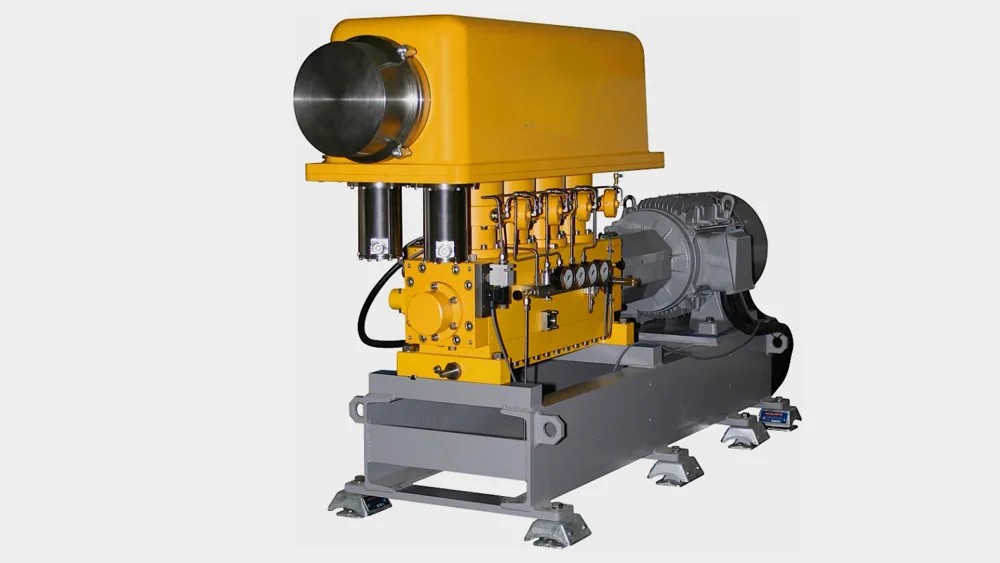Introduction
Superconducting magnet cooling are powerful electromagnets made from coils of superconducting wire. These magnets, unlike regular copper or aluminum magnets, can carry large electric currents without any resistance—but only at extremely low temperatures.
This process of cooling the magnets to the required temperature is known as superconducting magnet cooling. It involves the use of cryogens (like liquid helium and nitrogen) and specialized refrigeration systems that maintain cryogenic conditions.
Why Cooling is Necessary
Achieve Superconductivity
- Superconductivity only occurs below a certain temperature called the critical temperature (Tc), which is specific to each superconducting material.
- For example, niobium-titanium (NbTi), a widely used superconducting material, becomes superconducting below about 9.2 K.
- Without reaching these cryogenic temperatures, the material remains resistive and cannot function as a superconductor.
Prevent Quenching
- Quenching is the sudden loss of superconductivity in the magnet due to localized heating or disturbance.
- When quenching occurs, the magnet instantly becomes resistive, which causes rapid heating and potential damage.
- An effective cooling system ensures uniform temperature distribution and minimizes quench risk.
Maintain Magnetic Field Strength
- Superconducting magnets can produce very stable and strong magnetic fields, often in the range of several tesla (T).
- These fields must remain constant for accurate operation in MRI, NMR, and particle physics.
- Proper cooling keeps the magnet in its superconducting state, thus ensuring field stability over time.
Cooling Techniques
Liquid Helium Cooling
- Liquid helium is the most common coolant for superconducting magnets, due to its extremely low boiling point: 4.2 Kelvin (-268.95°C) at atmospheric pressure.
- The magnet is submerged in a helium cryostat—a double-walled container with vacuum insulation—to maintain low temperatures.
- Though highly effective, helium is expensive and scarce, requiring careful handling and conservation methods.
Cryocoolers (Closed-Cycle Cryogenic Refrigeration)
- Cryocoolers are mechanical refrigerators that generate very low temperatures without the continuous need for cryogenic liquids.
- Types include:
- Gifford-McMahon (GM) Cryocoolers – widely used in laboratory and medical devices.
- Stirling Cryocoolers – compact and efficient; used in smaller systems.
- Pulse Tube Cryocoolers – no moving parts in the cold head, offering higher reliability.
- These systems are ideal for zero boil-off operations, reducing the need for helium refills.
Liquid Nitrogen Pre-Cooling
- Used to reduce initial thermal load on the helium system.
- Nitrogen has a boiling point of 77 K (-196°C), and is much cheaper than helium.
- It cools the system close to helium temperatures before liquid helium is introduced, minimizing helium consumption.
- Used especially during system startup or initial cooldown.
Zero-Boil-Off (ZBO) Systems
- Advanced cryogenic design that uses cryocoolers to re-condense evaporated helium within a closed-loop system.
- Helps maintain constant helium inventory.
- Widely used in modern MRI machines to lower operating costs and environmental impact.
Applications
MRI (Magnetic Resonance Imaging)
- Superconducting magnets form the core of MRI scanners, producing the strong magnetic fields necessary for imaging soft tissues.
- Continuous cooling keeps the magnet in a superconducting state, ensuring consistent diagnostic image quality and reducing maintenance downtime.
Particle Accelerators
- Facilities like CERN’s Large Hadron Collider (LHC) use superconducting magnets to guide and accelerate particles.
- These magnets must be kept at cryogenic temperatures (1.9 K for LHC) to achieve the desired performance.
- Cryogenic infrastructure is vital to the accelerator’s functionality and reliability.
Nuclear Fusion Reactors
- Superconducting magnets confine high-temperature plasma within a reactor, preventing it from touching the walls.
- Example: ITER (International Thermonuclear Experimental Reactor) uses large superconducting coils cooled by helium.
- Stable, large-scale cooling is required for long operational durations.
Maglev (Magnetic Levitation) Trains
- Some maglev systems use superconducting magnets to create strong magnetic fields that lift and propel trains.
- These magnets are cooled to remain in a superconducting state during operation, enabling frictionless, high-speed travel.
Challenges in Superconducting Magnet Cooling
Helium Supply & Cost
- Helium is non-renewable and extracted from natural gas.
- Global supply constraints make it expensive and scarce.
- Minimizing helium consumption through efficient designs is now a priority for all industries using superconducting magnets.
Thermal Insulation
- Maintaining cryogenic temperatures requires effective insulation from the external environment.
- Vacuum jackets, multi-layer insulation (MLI), and low-thermal-conductivity materials are used to prevent heat ingress.
- Even small leaks or thermal bridges can drastically increase cryogen boil-off.
Quenching Risk
- Sudden loss of superconductivity (quench) releases stored magnetic energy as heat.
- This can lead to rapid helium vaporization, pressure spikes, and potential magnet damage.
- Quench protection systems, such as dump resistors and detection circuits, are crucial.
Maintenance and Reliability
- Cryogenic systems are complex and require regular monitoring for leaks, insulation failure, and cryocooler performance.
- Downtime for maintenance impacts machine availability, especially in critical systems like MRI or accelerators.
- Technological upgrades like remote monitoring and predictive maintenance are being adopted.
Conclusion
Superconducting magnet cooling is a critical enabler for advanced technologies in medicine, science, and transportation. Maintaining ultra-low temperatures allows superconducting magnets to function without resistance, offering unmatched magnetic field strength and energy efficiency. The evolution of cooling technologies—from traditional helium baths to sophisticated zero-boil-off systems and cryocoolers—has made these systems more sustainable and cost-effective. While challenges such as helium scarcity, insulation demands, and quenching risks remain, innovation continues to improve system reliability and operational performance.

